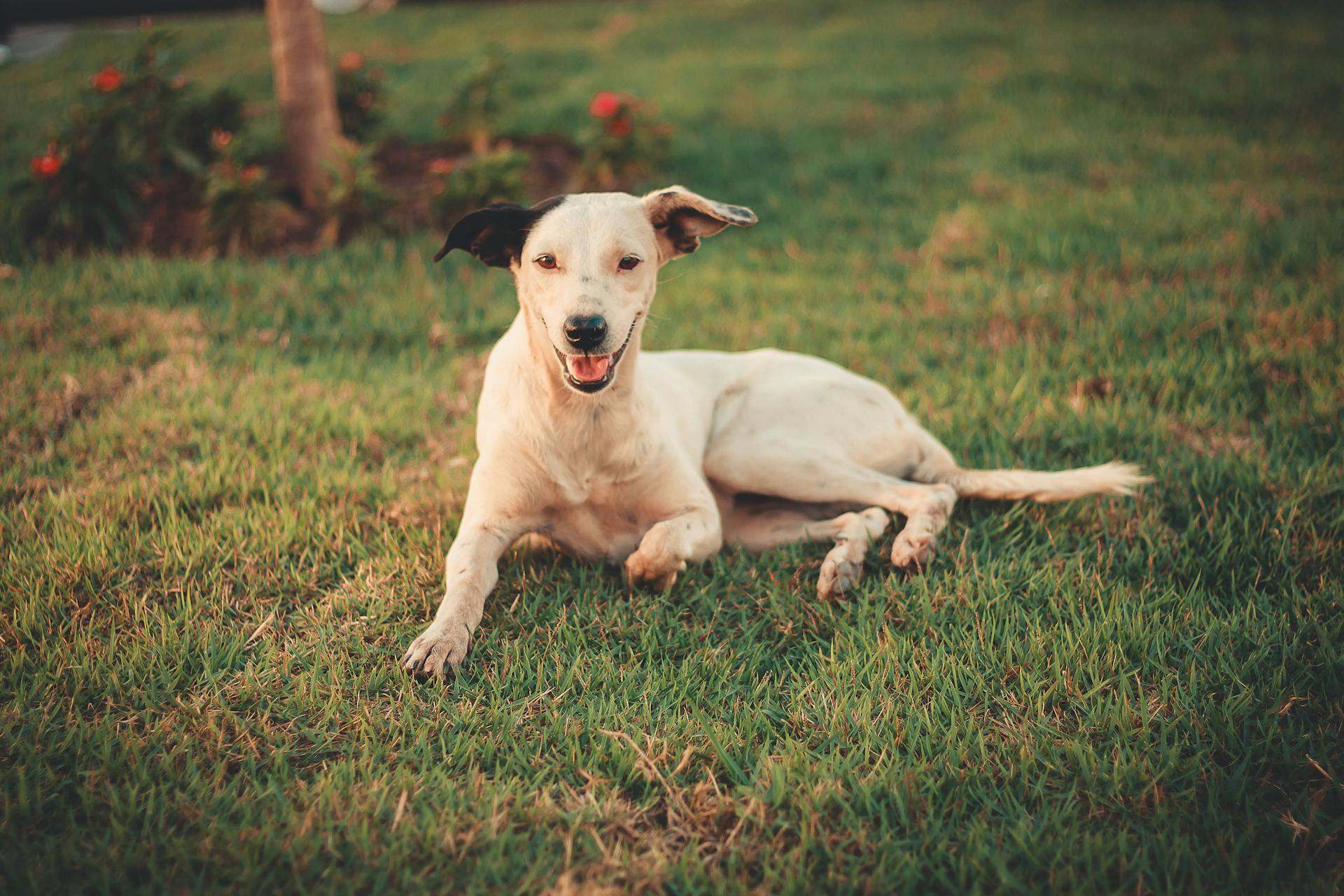For centuries, people have wondered if dogs dream. Pet owners and scientists have always been curious. Now, we know more about dog dreams thanks to research. This includes how dreaming affects their behavior and what it means.
Let’s dive into the world of dog dreams. We’ll look at the science behind them and how to tell if your dog is dreaming. This will help us understand our furry friends better.
Key Takeaways
- Dogs do experience dreams, similar to humans, during the rapid eye movement (REM) stage of their sleep cycle.
- Twitching paws, rapid eye movements, and vocalizations are common signs that a dog is dreaming.
- Dog dreams may provide a window into their cognitive processes, emotions, and daily experiences.
- Both good and bad dreams can occur in dogs, and recognizing the signs of nightmares can help pet owners provide comfort and support.
- Understanding the role of sleep stages and REM sleep in dog dreaming can offer insights into their overall health and well-being.
What is Dreaming and How Do Dogs Experience It?
Dreaming is a fascinating topic that interests both scientists and animal lovers. It’s not the same for dogs as it is for humans, but the brain processes are similar. By exploring the science of dreaming, we can learn how dogs experience sleep.
Understanding the Science Behind Dreaming
Dreaming happens during the rapid eye movement (REM) stage of sleep. The brain acts like it’s awake, which leads to the vivid dreams we have. Dogs also show brain activity and changes during sleep that suggest they might dream too.
Signs That Dogs Are Dreaming
- Twitching limbs: Dogs may suddenly move their legs or paws, showing they’re dreaming.
- Vocalizations: Some dogs whimper, growl, or bark in their sleep, revealing their dream content.
- Rapid eye movement (REM): Dogs, like humans, move their eyes quickly in sleep, a sign of dreaming.
- Increased breathing and heart rate: Their brain activity in REM sleep makes their breathing and heart rate go up, similar to humans.
By noticing these signs, we can peek into our dogs’ dream lives. Learning about dog dreaming helps us understand our furry friends better. It shows us the deep lives of our four-legged companions.
Dog Dreams: A Window into Their Secret World
Exploring dog dreams can give us deep insights into their inner lives and feelings. These dreams let us peek into their minds, showing us their daily experiences, thoughts, and fears.
When dogs dream, their eyes move quickly, their paws twitch, and they might whimper or growl softly. These signs show that dogs feel emotions and sensations, just like humans do in their dreams. By watching these signs, we can understand what our dogs are going through in their dreams.
Dogs’ dreams often mirror their waking lives and interactions. For example, a dog that loves playing fetch might dream about chasing a ball. A dog that enjoys cuddling with its owner might dream of snuggling on the couch.
“Dog dreams can be a window into their inner world, revealing their fears, desires, and the experiences that shape their lives.”
By exploring dog dreams or poppies, we can connect more deeply with our pets. We learn about their emotional needs and how to care for them better. Whether it’s a fun playtime or a cozy cuddle, understanding dog dreams helps us build a stronger bond with our furry friends.

Do Dogs Get Bad Dreams?
Dogs may not feel emotions like humans do, but they can have bad dreams or nightmares. They can get caught in scary visions during sleep, just like their owners. Knowing how to spot these nightmares can help pet owners comfort their dogs.
Recognizing Signs of Nightmares in Dogs
Dogs show different behaviors when they’re having nightmares. These signs include:
- Rapid eye movement (REM) and twitching limbs, which are signs of intense dreaming
- Whimpering, growling, or barking in their sleep
- Sudden changes in breathing patterns, such as rapid or irregular breathing
- Body stiffness or trembling
- Attempts to wake up or escape the dream, such as thrashing or trying to get up
If you see your dog acting this way, wake them up gently. Don’t startle them, as they might get scared. Instead, speak softly or pet them gently to help them calm down.
Even though dogs can have bad dreams, these nightmares don’t last long. They’re not as deep as human nightmares. By understanding these signs and being gentle, pet owners can help their dogs feel better and sleep peacefully again.
Dog Dreams and Their Impact on Behavior
Ever thought about how your dog’s dreams or poppies dreams might affect their day-to-day behavior? The link between dog dreams and how they act is fascinating. By understanding this, we can better care for our furry friends.
During the rapid eye movement (REM) sleep stage, a dog’s brain works a lot like a human’s. This means they likely have vivid dreams, just like us. These dog dreams could affect their mood, energy, and how they act when they wake up.
- Excited dreams may lead to increased plafulness and activity upon waking.
- Anxious or fearful dreams may contribute to a more cautious or apprehensive demeanor.
- Peaceful, serene dreams may result in a more relaxed and calm disposition.
Watching our dogs while they sleep can tell us a lot about their dreams. We can see how they move, make sounds, and look. This helps us understand them better. It lets us know if they need extra comfort or if they’re ready for fun.
“Understanding the connection between dog dreams and behavior can unlock a new level of empathy and care for our four-legged friends.”
Thinking about dog dream meaning helps us connect more with our dogs. It makes our relationship with them stronger and happier. As we learn more about how dogs think, studying dog dreams could really help our pets be happier and healthier.
The Role of Sleep Stages in Dog Dreaming
Dogs dream just like humans do, and the different sleep stages are key to understanding their dreams. One stage, Rapid Eye Movement (REM) sleep, is especially important. It’s when dogs likely have their most vivid dreams.
REM Sleep and Its Significance
REM sleep is when the brain is more active, eyes move quickly, and muscles relax. This is when humans and dogs have their most vivid dreams. For dogs, REM sleep is crucial for meaningful and captivating dreams.
In REM sleep, dogs’ brains work like humans’ during dreams. Their eyes move fast, showing they’re dreaming. They might twitch, make sounds, or even run in their sleep.
| Sleep Stage | Description | Relevance to Dog Dreaming |
|---|---|---|
| REM Sleep | Characterized by increased brain activity, rapid eye movements, and muscle relaxation. | This is the stage when dogs are most likely to experience vivid dreams, as their brain patterns during REM sleep resemble those observed in humans during dreaming. |
| Non-REM Sleep | Includes lighter stages of sleep with less brain activity. | While dogs may still experience some dreaming during non-REM sleep, the dreams are typically less intense and less vivid compared to those that occur during REM sleep. |
REM sleep is key to understanding dog dreams. It shows us how our canine friends dream and what their dreams might be like. By noticing their behaviors and body signs, we can see how deep and complex their dreams are.
Dog Dream Meaning: Interpreting Your Pup’s Slumbering Visions
Ever wondered what your dog dreams about when they’re sleeping? Dog dreams can give us a peek into their inner world. They tell us about their feelings, memories, and daily life.
Dogs often dream about things they love, like chasing, playing fetch, or seeing their favorite people. These dreams show their natural instincts and how much they care about their owners and fun activities. By watching for signs like twitching, fast eye movements, or sounds, we can understand their dreams better.
Understanding your dog’s dreams can help you meet their emotional needs. If they have bad dreams often, they might be stressed or anxious. Paying attention to their dreams can make your bond stronger. It helps us see how much our dogs think and feel.
FAQ
Do dogs get bad dreams?
Yes, dogs can have bad dreams or nightmares, just like humans. They go through sleep stages similar to humans, including REM sleep, which is linked to dreaming.
How do I know if my dog is having a bad dream?
Signs that your dog might be having a bad dream include whimpering, growling, and twitching. They might also seem distressed or startled when waking up. If you see these signs, wake your dog gently and comfort them.
What do dog dreams mean?
Dog dreams can offer clues about their daily life, feelings, and inner thoughts. While we can’t fully understand dog dreams, they might reflect their memories, fears, or desires. Watching your dog’s dreams can help you understand their needs better.
Can dogs have nightmares?
Yes, dogs can have nightmares or bad dreams. These can be caused by past traumas, changes in their environment, or other factors. If your dog shows signs of a nightmare, like whimpering or thrashing, wake them gently and comfort them to make them feel safe.
How do dog dreams affect their behavior?
A dog’s dreams can influence their behavior when awake. Pleasant dreams can make them more relaxed and happy. Nightmares or bad dreams might make them more anxious or aggressive. Knowing how dreams affect your dog can help you support them better.
What is the role of REM sleep in dog dreaming?
REM sleep is key to dreaming in dogs, just like in humans. During this stage, dogs have increased brain activity, rapid eye movements, and muscle twitches. These signs show they are dreaming. Studying their REM sleep can help us understand their dreams better.

How can I interpret my dog’s dreams?
Interpreting dog dreams is hard because we can’t talk to them directly. But, by watching their behavior during and after dreams, you might learn about their feelings, memories, and daily life. Common themes in dog dreams include chasing, playing, or going through their daily routines.






